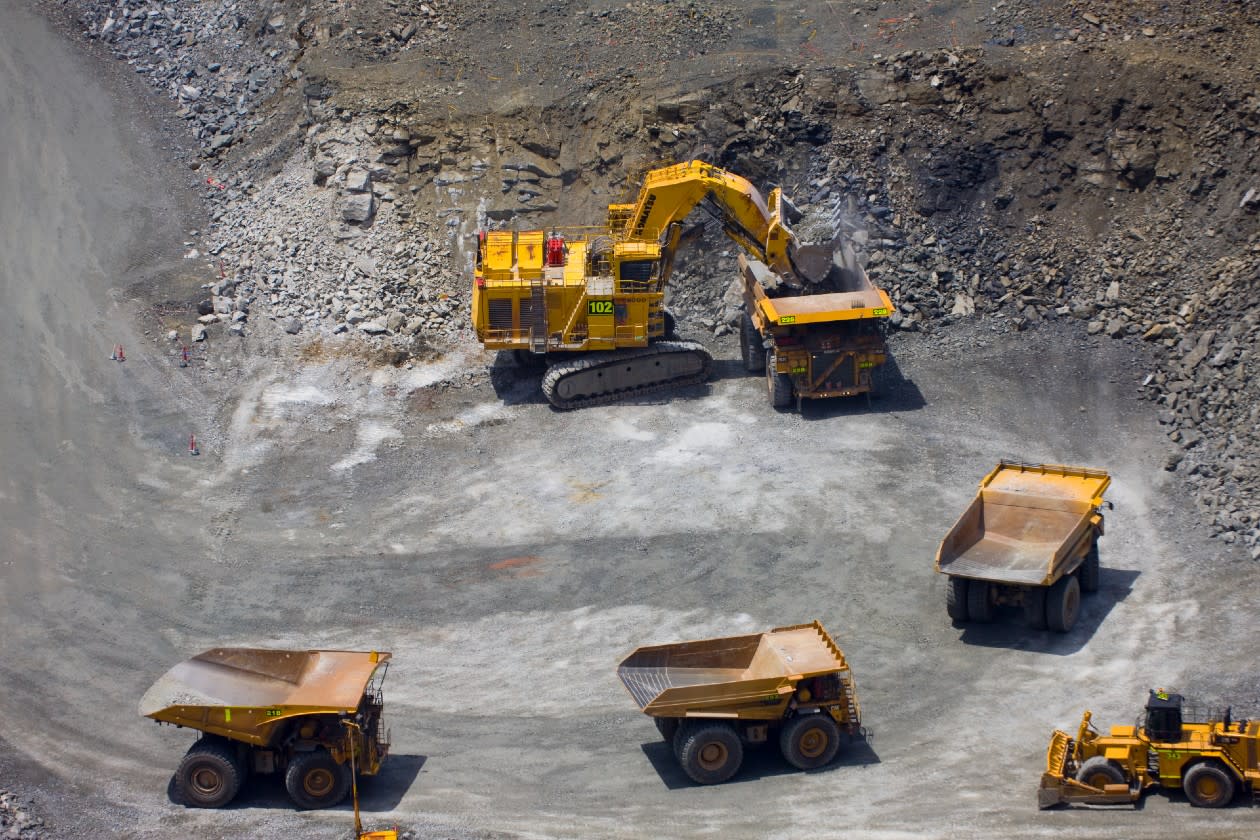Barrick’s second quarter results were in-line with company guidance. Revenue increased 12% to $3.2bn with improved gold and copper prices more than offsetting a fall in production.
Operating income grew from $0.8bn to $1.1bn, benefitting from the increased revenue and relatively stable costs.
Free cash flow was up by $277mn to $340mn with much improved cash generation from operations more than offsetting an increase in investment expenditure. The net debt position fell to $688mn.
The quarterly dividend was unchanged at $0.10 per share. The company also repurchased $49mn of shares compared to none in last year’s second quarter.
Barrick remains confident of meeting both copper and gold guidance for the full-year.
The US listing of the shares was up 2.1% in pre-market trading.
Our view
Barrick's top line continues to benefit from buoyant gold prices, and second-quarter profit growth grew by an impressive 58% compared to the first quarter. That's helping to cover some of the production cracks seen in recent results.
Sticky inflation has been a persistent thorn over the year, and Barrick has now missed its original gold cost guidance for two years in a row. A mix of lower production and increased maintenance have also been adding pressure to the cost line. Things are expected to improve from here, with Barrick expecting costs to ease over the year.
Increased production at existing mines can be a particularly powerful driver for the group - since costs rarely increase in line with output. On that note, the expansion of the low-cost Pueblo Viejo mine and restarting of the Pogera mine are both positive catalysts for production over the medium term.
There's also been positive progression in both Gold and Copper reserve levels, as organic expansion uncovers new deposits. This is key, as it reduces reliance on acquisitions to support future production guidance.
But these projects don't come cheap, nor do the ongoing maintenance costs just to keep mines running. For now, prices are high enough that free cash flow has returned, but the net cash position seen for parts of last year has disappeared. Debt's still low so there are no immediate liquidity concerns, but it highlights the speed at which things can change.
However, the strong start to the year has allowed the company to dip into the $1bn share buyback allowance which management plan to use at their discretion over 2024. There are, however, no guarantees of any further distributions to shareholders.
2024 looks set to be another volatile year. Equity markets in the US are looking frothy in places, there’s still many twists and turns to go in the race for the White House, and conflicts continue to cause turbulence across the globe. The general level of uncertainty should help keep gold prices elevated, though there are no guarantees.
We view Barrick's large, diversified, footprint as one of the better options in the sector and it's in a position to benefit if the gold price stays elevated. But we would remind investors that Barrick doesn't control commodity prices and performance can be volatile.
Environmental, social and governance (ESG) risk
Mining companies tend to come with relatively high ESG risk. Emissions, effluences and waste, and community relations are key risk drivers in this sector. Carbon emissions, resource use, health and safety and bribery, and corruption are also contributors to ESG risk.
According to Sustainalytics, Barrick’s management of material ESG issues is strong.
Barrick has robust ESG policies with best practices like performance targets and independent certification. It has a strong climate change strategy and effective water risk management, using various tools to assess water risks. Barrick is aiming for net-zero emissions, with a 2030 target to reduce operational greenhouse gas emissions by 30% from 2018 levels.
Barrick Gold key facts
All ratios are sourced from Refinitiv, based on previous day’s closing values. Please remember yields are variable and not a reliable indicator of future income. Keep in mind key figures shouldn’t be looked at on their own – it’s important to understand the big picture.
This article is not advice or a recommendation to buy, sell or hold any investment.No view is given on the present or future value or price of any investment, and investors should form their own view on any proposed investment.This article has not been prepared in accordance with legal requirements designed to promote the independence of investment research and is considered a marketing communication.Non - independent research is not subject to FCA rules prohibiting dealing ahead of research, however HL has put controls in place(including dealing restrictions, physical and information barriers) to manage potential conflicts of interest presented by such dealing.Please see our full non - independent research disclosure for more information.


